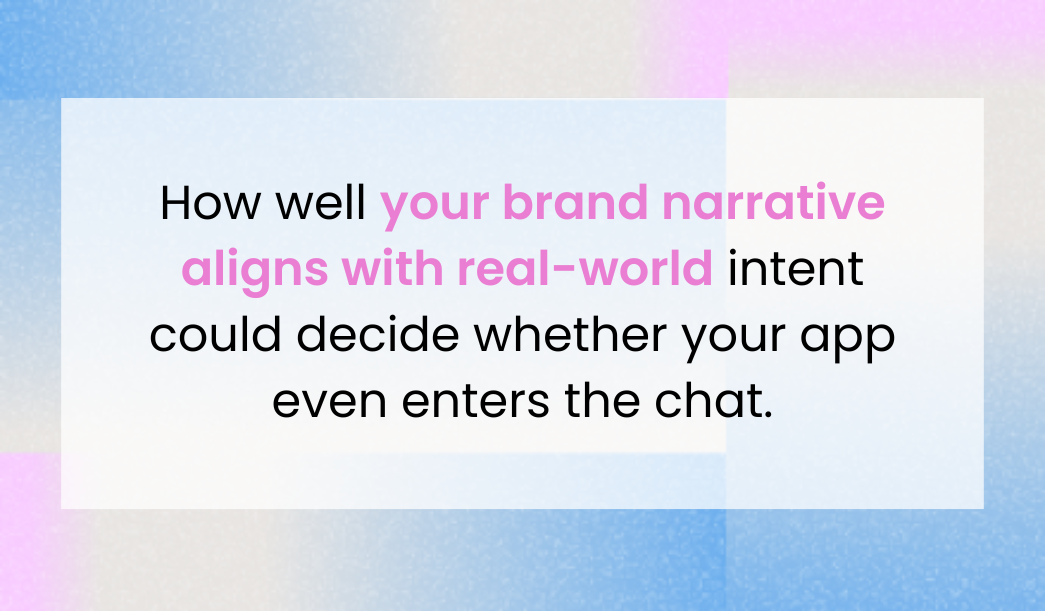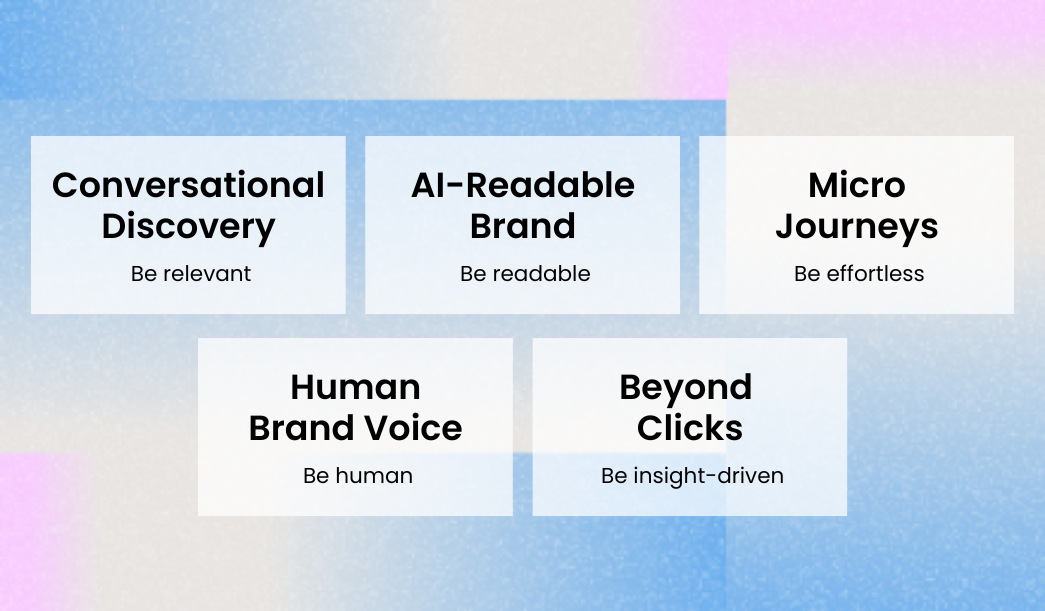Mobile trends
October 28, 2025
ChatGPT OS: The Next Interface Revolution
When OpenAI introduced its new “ChatGPT OS” in October 2025, it marked a shift from conversational AI to a broader platform model. The update unveiled an operating-system-like framework where users can interact with apps, services, and commerce directly inside ChatGPT. For mobile app developers and digital businesses, it opens a new layer of distribution — one where apps don’t just live in stores, but inside conversations that lead directly to action.
From Search to Conversation, and Now to Infrastructure
The web was built around search. Apps organized the chaos. But ChatGPT OS represents something different: a world where we no longer “search” or “download” anything. We ask, and the system does the rest.
With its new Apps SDK, developers can now build full apps directly inside ChatGPT. That means an airline can sell tickets, a retailer can process orders, or a publisher can serve personalized content, all without users leaving the chat. Combined with Instant Checkout, co-developed with Stripe, OpenAI is building the rails for an entirely new kind of digital economy: one where discovery, engagement, and conversion all happen in the same thread.

To anyone who spent the last decade optimizing funnels, attribution models, and install flows, this changes the entire game. If ChatGPT becomes the primary place users interact with apps, then visibility, not installs, becomes the new metric of success.
This is a continuation of the AI-driven personalization trends we explored in our article on AI-Powered Personalization in Mobile Apps, where relevance and tailored experiences already drive stronger engagement.
A New Kind of OS
Calling it an “operating system” might sound bold, but that’s exactly how OpenAI framed it at DevDay 2025. ChatGPT will decide which apps can respond to which user requests. It will define interface standards, manage permissions, and eventually — much like iOS or Android — shape the rules of its ecosystem.
On one hand, it removes friction for users. On the other, it concentrates discovery power in one AI-driven layer. In effect, ChatGPT OS could become the new App Store — but one where your ranking isn’t determined by downloads or ratings, but by relevance in conversation.
For app marketers, this means visibility will depend on context, not keywords. How well your brand narrative aligns with real-world intent could decide whether your app even enters the chat.

What App Marketers Need to Do Differently
Success in the ChatGPT OS era won’t come from traditional performance tactics alone. Marketers will need to think conversationally: designing campaigns that feel like dialogue rather than display. That starts with re-engineering creative assets for intent-based prompts, ensuring your brand’s voice can “speak” naturally within AI-driven environments.
Equally important is data readiness. With ChatGPT acting as a discovery layer, structured metadata and clean integrations will become the new SEO: helping the OS understand when, how, and why your app is relevant. Instead of optimizing for ad placements, marketers will optimize for answers: training the system to recognize their brand as the best response to a user’s intent.

Finally, attribution models will evolve. As conversions happen inside conversations, marketers must rethink how to measure value: focusing less on clicks and installs, and more on multi-touch conversational paths, purchase confirmations, and post-interaction engagement. The brands that master this adaptive measurement will be the ones that stay visible in an environment where attention isn’t bought, but earned.
This shift echoes the principles in “Leveraging Behavioral Analytics for User Acquisition in Mobile Apps”, where data-driven optimization is already redefining how marketers interpret and act on user behavior.
What’s Driving the Shift
First, OpenAI’s massive hardware push. Its new multi-billion-dollar partnership with AMD ensures access to the chips needed to run such an always-on, context-aware system. The company reportedly secured up to six gigawatts of compute power by 2026, a scale comparable to cloud hyperscalers.
Second, the Agentic Commerce Protocol, developed with Stripe, allows ChatGPT to complete transactions directly. Users can approve a purchase with one click, while merchants remain the merchant of record. That design is not accidental; it’s a direct shot at becoming the trust layer for conversational commerce.
Third, the behavioral shift is already here. Consumers are comfortable talking to AI. They ask ChatGPT for recipes, itineraries, workout plans and soon, they’ll ask it to book hotels, order groceries, and edit documents. Every query is a potential transaction.

Implications for the App Industry
Apps are no longer just icons on a home screen, their services within a larger conversation. Instead of fighting for downloads, brands will fight for mindshare inside ChatGPT’s ecosystem. The question shifts from How do I acquire users? to How do I become part of the dialogue?
Performance marketing will have to adapt, too. Traditional metrics, CPI, CTR, even installs, start to lose relevance when there’s no app store in the traditional sense. Measurement moves toward intent tracking and post-conversation outcomes: which prompts lead to conversions, how users navigate multi-app workflows, and what engagement looks like in a world without visible UI.
Becoming Part of the ChatGPT Dialogue
To stay visible in ChatGPT’s new ecosystem, brands and app developers need to approach user acquisition as participation, not interruption. The experiences that perform best will feel natural inside a conversation — helpful, contextual, and designed around intent.
- Design for Conversational Discovery: build experiences that answer real user questions. Instead of chasing generic prompts, map your app’s core value to specific user intents (“book a flight,” “order groceries,” “track my workouts”). The clearer that alignment, the more likely ChatGPT is to surface your app.
- Build an AI-Readable Brand: structure product data, offers, and content so ChatGPT can interpret them. Think of it as semantic optimization: tagging features, pricing, and categories in ways that help the OS understand when your app is relevant.
- Create Micro Journeys: brands should simplify actions into conversational steps: from discovery to conversion in one or two exchanges. The easier it is to complete an action, the more often ChatGPT will recommend it.
- Humanize Your Brand Voice: conversation is the interface. The brands that succeed will sound less like ads and more like assistants: clear, responsive, and genuinely helpful. Craft prompts, replies, and product copy that feel conversational and context-aware.
- Measure Beyond Clicks: traditional metrics fade when the journey happens inside an AI dialogue. Focus on conversational engagement (how often users complete intents or re-engage), as well as sentiment and retention post-interaction.

Privacy, Power, and the New Gatekeeper Problem
The company insists it won’t prioritize its own services over others, but history suggests otherwise. Apple’s App Store and Google Play both began with similar promises before evolving into closed ecosystems with strict policies and profit motives.
With ChatGPT OS, the power is about context. If the system decides which app answers a query, it also decides which brands and experiences shape the user’s world. That raises questions of transparency, neutrality, and data governance that the app industry has wrestled with for years.
Still, unlike earlier platforms, OpenAI operates under intense public scrutiny. It knows that trust is its greatest currency. And to maintain it, the company will need to build not just smarter systems, but fairer ones where developers and advertisers understand how visibility is earned, not bought.
The Opportunity for App Leaders
Programmatic advertising changed how we reached users. Now, conversational platforms like ChatGPT OS are changing how people find what they need.
You can already see it in action. Expedia’s ChatGPT integration, for example, lets travelers plan and book trips by simply asking. No endless filters or pages, just, “Show me business-friendly hotels in Seattle,” and the system pulls up options, suggests flights, and handles the booking right there in the chat.

It’s a small shift in behavior with huge implications. Inside ChatGPT OS, apps are part of the conversation. For marketers, that means building experiences that fit naturally into that flow, where your product’s value shows up through interaction, not interruption.
Looking Ahead
If OpenAI succeeds, ChatGPT OS could become the connective tissue of digital life. For the app ecosystem, that’s both a disruption and an opportunity to evolve.
In the short term, we’ll see a surge of “ChatGPT-native” experiences and apps optimized for conversation, not clicks. In the long term, expect a redefinition of what “mobile” even means.
That, in essence, is what ChatGPT OS represents: a shift from visibility to integration, from search to intent, and from isolated apps to intelligent ecosystems.
Ready to think differently about user acquisition?
Subscribe to our newsletter and stay updated with the latest UA strategies and mobile marketing trends.





.png)
.webp)

.png)


